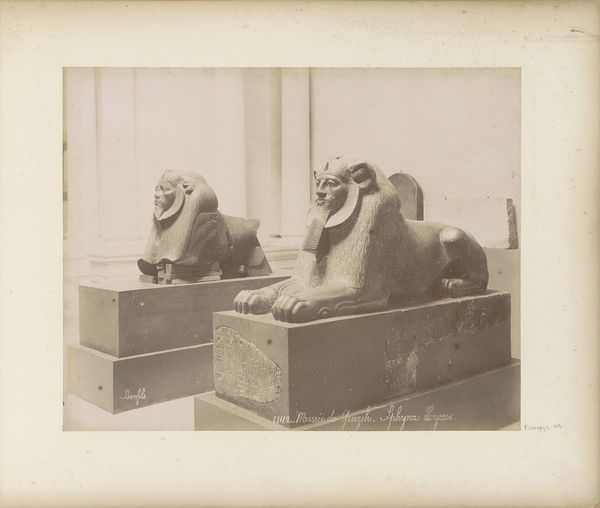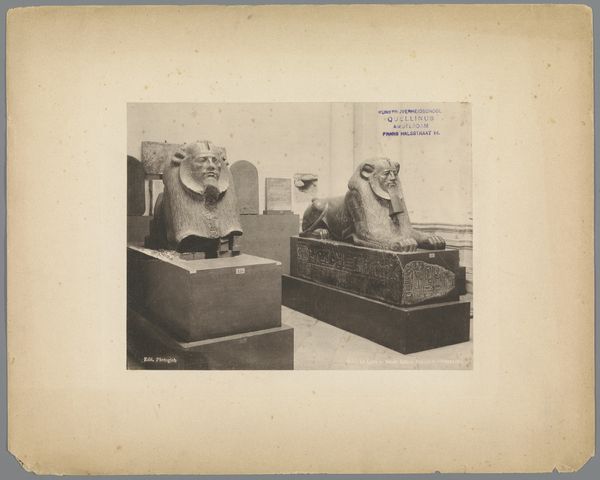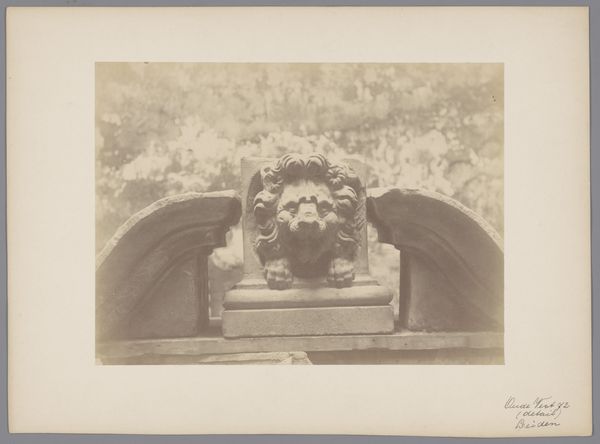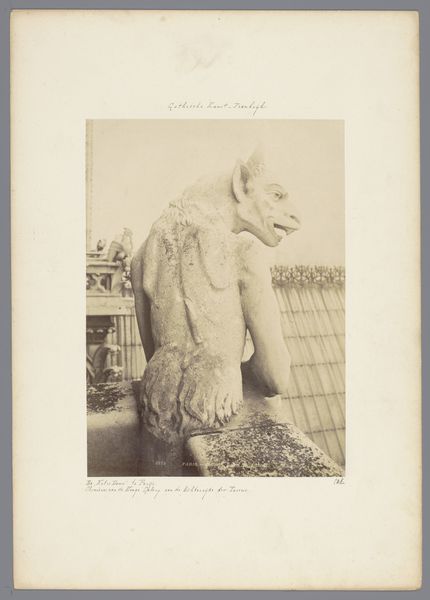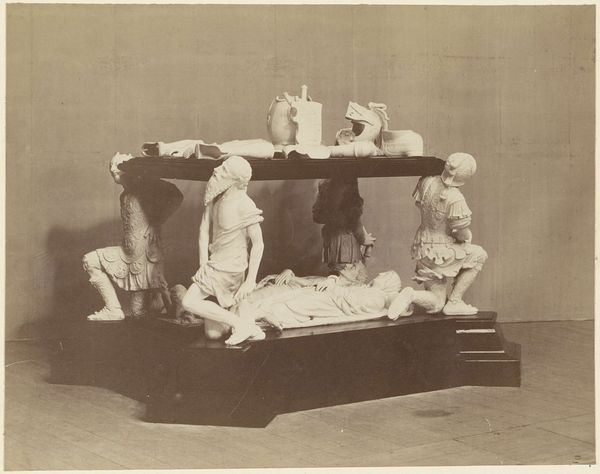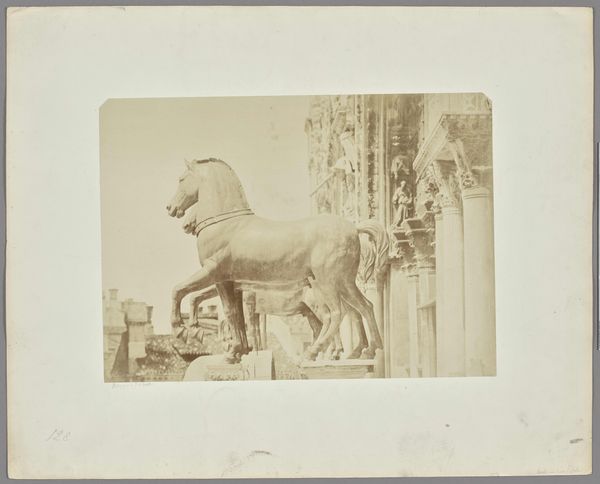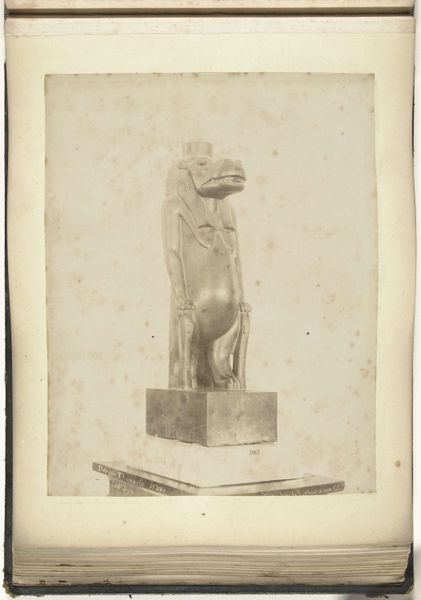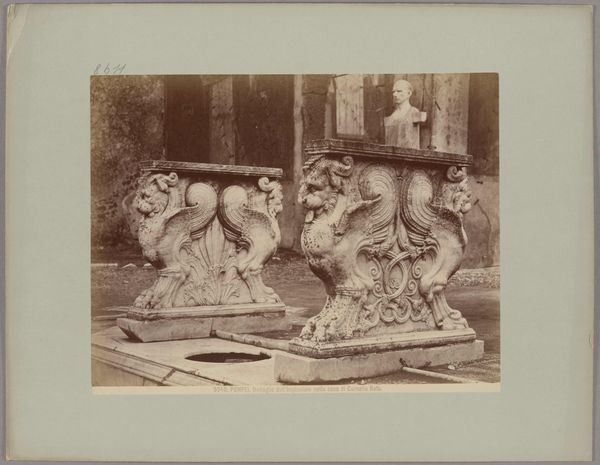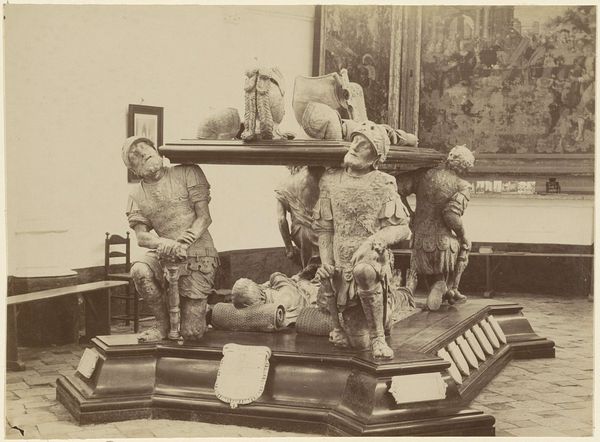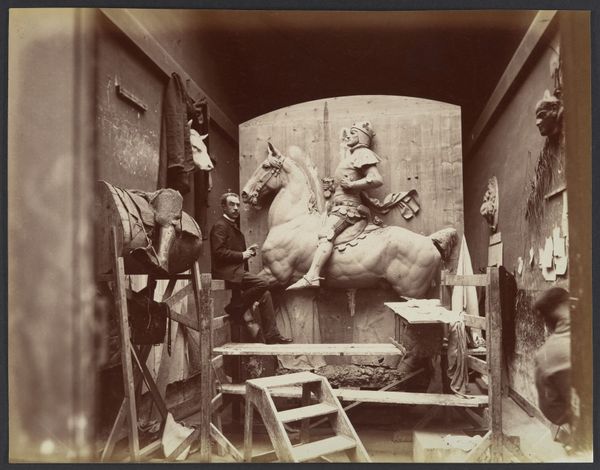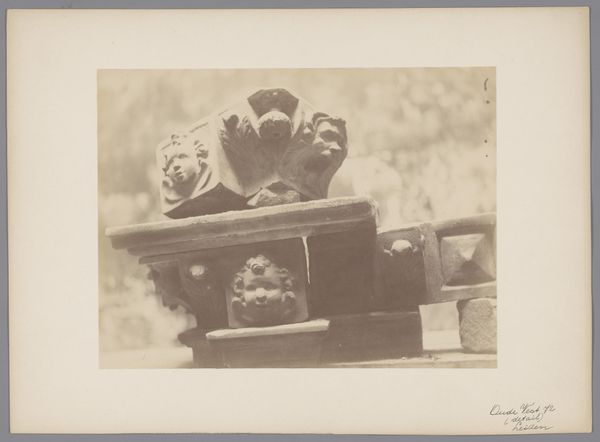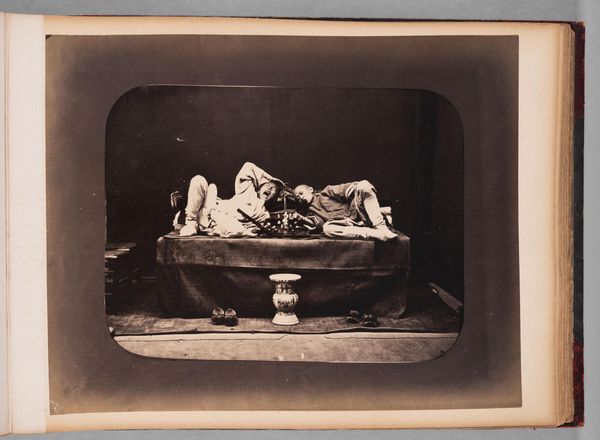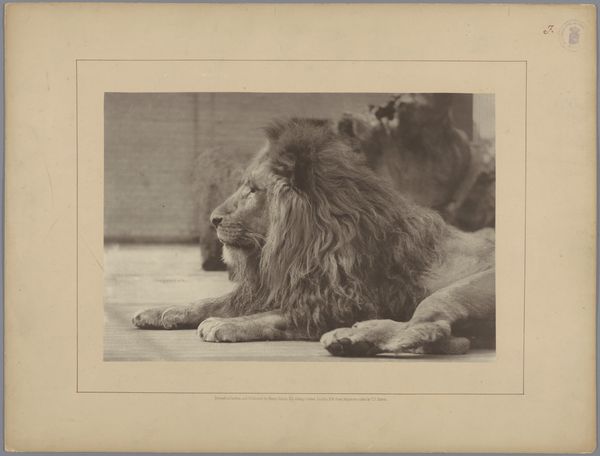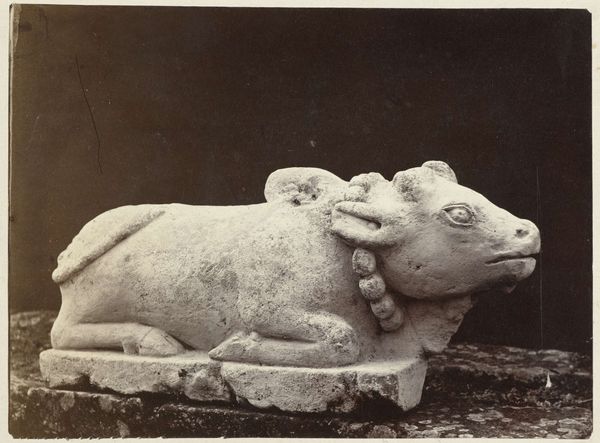
photography, photomontage, sculpture
#
portrait
#
ancient-egyptian-art
#
photography
#
ancient-mediterranean
#
photomontage
#
sculpture
#
history-painting
Dimensions: height 22 mm, width 277 mm, height 277 mm, width 367 mm
Copyright: Rijks Museum: Open Domain
Editor: This photograph by G. Lekegian & Co., dating between 1887 and 1910, features two sphinx sculptures. There's a certain somber quality to it, a stillness that really makes you contemplate the weight of history. How do you interpret this work, especially given its photographic medium? Curator: What strikes me is how photography, emerging as a technology, grapples with representing power structures embedded within ancient iconography. Sphinxes, traditionally gatekeepers and symbols of royal authority, are here re-presented. How does the photograph mediate our relationship to these symbols? It raises questions about access, cultural appropriation, and the democratization of ancient power through reproduction. Editor: That’s interesting. It almost feels like the photo strips some of the power away, makes them objects for us to study rather than revere. Curator: Exactly. And who is “us”? This image circulates within a specific colonial context. Egypt at the time was experiencing increased Western intervention. Consider how photography served as a tool for cataloging, classifying, and ultimately controlling narratives about Egyptian history and identity. Who is taking these photos, and for what audience? Editor: So, it's not just about the sphinxes themselves, but also about how the photograph participates in a larger power dynamic. Curator: Precisely. We must consider how this visual representation interacts with socio-political narratives. Thinking about whose gaze is prioritized—then and now—helps us deconstruct the layers of meaning embedded within this image. Editor: I see the photo now as much more than just a record. It’s a complex statement about power and representation. Thank you! Curator: Indeed. Art, and especially historical depictions like these, are so relevant when we see how their representations shift across time and place, shaped by the dynamics that play out between them.
Comments
No comments
Be the first to comment and join the conversation on the ultimate creative platform.
